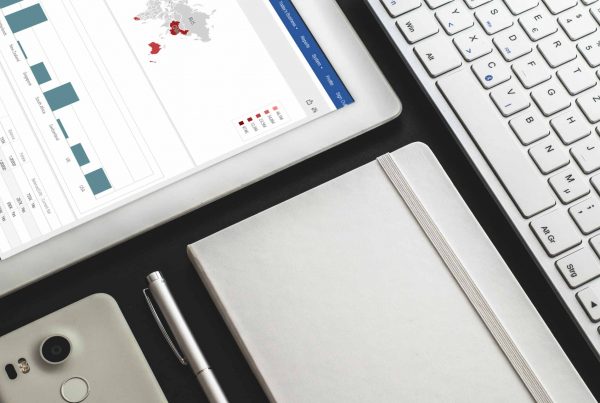Cash Management is a term used in everyday parlance by Corporate Treasurers, CFOs and other senior financial people in most medium to larger organisations. Generally speaking, they all use the term in the same context and many accompany it with the term Cash Forecasting.
So, Cash Management and Cash Forecasting are activities that are now very much top of the list of requirements when selecting and implementing a Treasury Management System. So what’s involved in Cash Management or to put it another way, “Managing Cash”?
Managing Cash is a daily activity in many organisations. It boils down to collecting the data, reviewing and analysing it and then distributing it to where it is most needed.
If you don’t carry out the first two elements, i.e. collecting the data and reviewing and analysing it, then anything you do in relation to distributing it, will be laced with risk. So, a healthy regard for collecting and analysing is the key to “managing” your cash.
An overall description means knowing how much cash a company has at its disposal and what to do with it. However, an extended interpretation and one that we, in Salmon Software, are expected to provide includes knowing:
- How much cash is available to the company?
- What currencies is it in?
- What jurisdiction is it in?
- What entities within the overall group does it belong to?
- What counterparties are holding it?
- What form is it in?
- How much at risk is it?
- Where and how to distribute it.
If you want answers to these questions, then you must put in place an automated system to gather this cash information, usually on a daily basis, report on it and then take action to move it, invest it, use it to pay back debt or meet some other corporate need that is driven by cash.
It is fair to say that most corporates when referring to managing the cash, they mean the cash at bank and the near cash instruments such as money market deposits or holdings in money market funds. The latter two are usually easier to track because they are managed and monitored in a Treasury Management System (TMS), if you have one. The more difficult task revolves around the cash at bank, which is what we are focussing on here.
In a large corporate, especially an international corporate, there may be 100s of bank accounts around the globe held in a variety of banks, in many different currencies and owned by all of the different entities within a group. If you are going to manage this in any meaningful way, as a corporate treasurer, you need to have, as a minimum, the balance in each of these accounts delivered to you every day. How do you do that?
There are a variety of ways including:
Getting each of your banks to send you a file of account balances each day. This is manageable if the number of accounts is low, say 50 or less and the number of banks is low also, probably three or less. If the volume of accounts is low, then you can manage your cash manually, as a lot of companies do, using manual collection and EXCEL.
If that is not the case, i.e. you have a lot of accounts and a lot of banks to deal with, then you need a more sophisticated solution.
Stepping up a level, you need to select a single collection agent for all banks and all accounts. There are a number of banks who will act as your agent and do the collecting for you. This works by each bank sending your collecting bank, a file of their account balances each day and then your collecting bank sending you these files each day containing the balances for all of your accounts across your network of banks.
There are various banks who offer this service. This would be the case if you have 100+ accounts. However, this is largely a perfunctory service and requires you to do your own processing when you have received the file because while your bank provider can offer you the balance data, they cannot offer you much in the way of parsing or analysis of the data.
SWIFT themselves, also offer Corporate Services and if you have your own BIC then you can contract with SWIFT to be the collection agent.
However, a problem that often manifests itself with this solution is that the feeder banks to your collection agent, don’t have common standards when it comes to sending the information. The most common forms of account balance data are SWIFT MT940s and BAI files. SWIFT MT940s and BAI file formats are considered “standard formats” but in the real world of cash collections, you will find different banks populating different fields with the same data or the same fields with different data. So while you are getting the files, working with them and processing them can be problematic because of the variations against standard and your collection agent, more often than not, will not parse the different files collected and pass on “pure” data to you. Rather, they will pass it on as they find it and it is your problem to “purify” it in order to make it useful for your cash management process.
Stepping up then to the next level, if you want more sophistication around the collection process to resolve the data purification problem, and offer other information and analysis about the data, then you may need a bureau service. Bureau services can parse the data better and offer other information and analysis about the data itself.
Once you have decided on your collection agent, i.e. your data provider, then you have gone some way towards Managing your Cash. However, that’s really only jumping the first hurdle which is collections.
There are other considerations and problems to cash management that won’t be resolved by your provider. For these, you will need a TMS which integrates with your provider to offer you a complete cash management service. Examples of where your TMS offers you more sophisticated analysis are:
- Are there large swings in the balances on any accounts from the previous day?
- Are there any excessively high balances that are unexpected?
- Are there worryingly low balances that are unexpected?
- Have any new bank accounts been opened by entities since the last file delivery? If so, can they be isolated from the 100s of accounts that are in the file and which entity opened them?
- Conversely, have any bank accounts been closed and don’t appear in the file, and who closed them?
- Many banks will not include a balance record in the file if the balance has not changed from the previous day. So if there is no record for some accounts, your data is incomplete. Your TMS should be able to, and needs to, cater for this situation.
- If it is a bank holiday, many banks will not deliver a file at all. Your TMS should also be able to deal with this situation.
- Where problems arise, your TMS should facilitate issuing automated emails to the relevant personnel with detailed diagnostics of the issues encountered.
- If some banks in your network cannot deliver a file to your provider, can you augment those that are coming through in the file with manual entries or EXCEL upload to ensure that you have the complete cash picture?
- To establish your overall cash position, you need first to establish the cash position in each currency and then convert each balance into your reporting currency for an overall position. What FX rates are used for this?
- Do you want the cash position for each entity in the group expressed in their reporting currency which may be different to the Group reporting currency?
- Do you want to integrate this process with your Cash Pooling process?
- If so, are you using physical pooling such as ZBAs or notional pooling?
- Are there intercompany positions created by operating ZBAs? If so these should be updated simultaneously as part of the analysis process.
- If you are operating notional pooling, can you reallocate the interest across the contributing accounts?
- Do you want to send automated reports on your positions to different personnel? This should include different reports to different people.
- The distribution decisions you make need to be converted into trades and these trades and / or funds transfers, and these need to be process driven under appropriate approval and authorisation
The above is not an exhaustive list of considerations. But if you take note of all of these, you will have come a long way towards automating the Cash Management process and making informed decisions about how best to use your cash.
There is more to Cash Management including two other very significant elements:
- Having established your cash position, how to trade your way from that cash position to your desired end of day cash position and integrate that with your trading platform.
- Cash Forecasting. This includes integrating your cash position with your expected future cash flows and how they impact on your desired position tomorrow, next week, next month and into future periods.
About Tassos Dimopoulos, Director at Salmon Software
Tassos Dimopoulos runs Client Services for Salmon Software in the UK. He is a graduate of the Harvard University.
Press Releases




